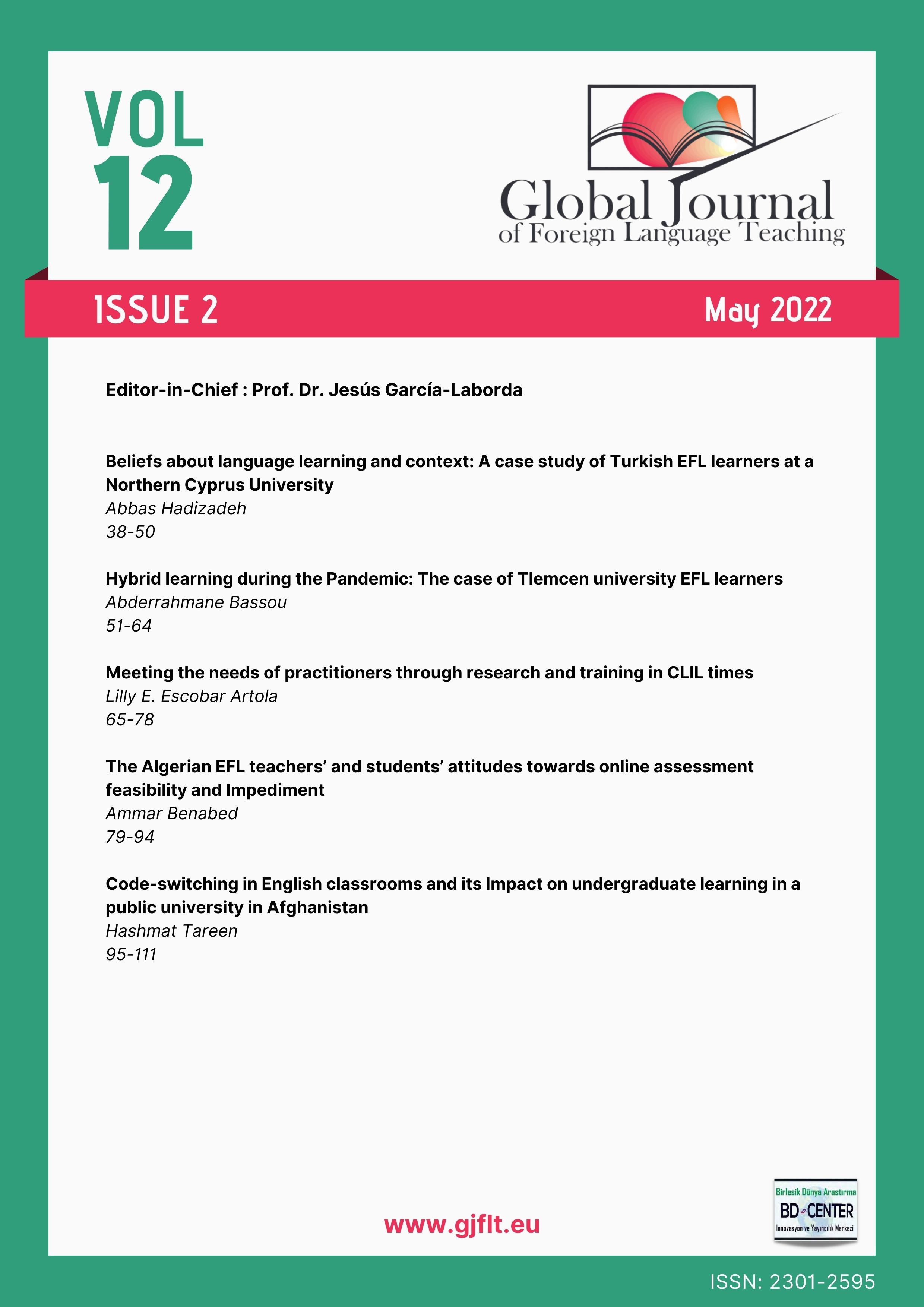Code-switching in English classrooms and its Impact on undergraduate learning in a public university in Afghanistan
Main Article Content
Abstract
The alternate use of two different languages as code-switching is situated in the field of bilingualism and it is considered a common feature of those who speak two or more languages. The occurrence of code-switching in English classrooms is considered a conducive linguistic resource to be exploited and practiced sensibly. This study aims to highlight the current situation of code-switching in EFL classrooms, the motives for EFL lecturers’ code-switching during their instruction to facilitate the teaching and learning process, and the measures for avoiding the use of code-switching. A qualitative study based on interviews followed by classroom observation was conducted. Eight EFL learners in a public university participated in this study. Four instructional periods of classroom observations were carried out. The results indicated that code-switching is predominantly employed and learners perceive it positively and lecturers use it for content clarification and building rapport with learners. Moreover, it can be also considered as impeding language skills.
Keywords: Code-switching; EFL; EFL classroom; language.
Downloads
Article Details

This work is licensed under a Creative Commons Attribution 4.0 International License.
Authors who publish with this journal agree to the following terms:- Authors retain copyright and grant the journal right of first publication with the work simultaneously licensed under a Creative Commons Attribution License that allows others to share the work with an acknowledgement of the work's authorship and initial publication in this journal.
- Authors are able to enter into separate, additional contractual arrangements for the non-exclusive distribution of the journal's published version of the work (e.g., post it to an institutional repository or publish it in a book), with an acknowledgement of its initial publication in this journal.
- Authors are permitted and encouraged to post their work online (e.g., in institutional repositories or on their website) prior to and during the submission process, as it can lead to productive exchanges, as well as earlier and greater citation of published work (SeeThe Effect of Open Access).
